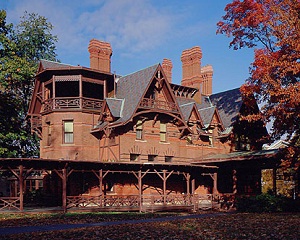Mark Twain museum goes solar
 Ever since the name Mark Twain began gracing the headlines of civil-war era newspapers, he has enriched the story of America, and he continues to do so today. On the eve of his 175th birthday on Nov. 30,2010, the Mark Twain House & Museum announced it is installing solar panels on the Museum’s roof in Hartford, Conn.
Ever since the name Mark Twain began gracing the headlines of civil-war era newspapers, he has enriched the story of America, and he continues to do so today. On the eve of his 175th birthday on Nov. 30,2010, the Mark Twain House & Museum announced it is installing solar panels on the Museum’s roof in Hartford, Conn.
Twain, a fan of science, technology and nature, would likely have tittered at the prospect of powering his home with the sun. He likely would have harrumphed and said, “‘bout time.”
After all, he predicted his own death: “I came in with Halley's Comet in 1835. It is coming again next year, and I expect to go out with it.…The Almighty has said, no doubt: 'Now here are these two unaccountable freaks; they came in together, they must go out together.'”
The museum already was a tribute to sustainable tribute to a legend. It was the first museum, when completed in 2003, to achieve LEED-certification for energy use and meeting environmental standards, said Steve Courtney, publicist and publications editor for the museum.
“The thinking then was this should not only be an attractive building, but also have a social responsibility that reflects what Mark Twain felt about humanity and society,” he said.
The museum’s roof will now host a 5 kilowatt (kW) PV array.
According to Courtney, P. Wayne Moore, managing partner of Tychon Energy Systems, spearheaded the project to donate the system and its construction to the museum. The company will install and donate the system with its partners ET Solar, Turtle Energy LLC and Sunlight Solar.
Though the panels weren’t installed when the museum first opened the museum’s designer, Robert Stern, Dean of the Yale School of Architecture and founder and Senior Partner of Robert A.M. Stern Architects, designed the museum’s roof with solar power in mind.
“Stern was aware of energy efficiency,” he said. “The museum was built into a hillside, so portions of the building are underground.” Such building techniques help reduce the building’s energy use.
But the 5 kW array won’t power the entire museum.
“They tell us it will help with about 10 percent to 15 percent of the museum center,” Courtney said. “It’s a rather big building.”
Image courtesy of destination360.



